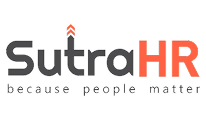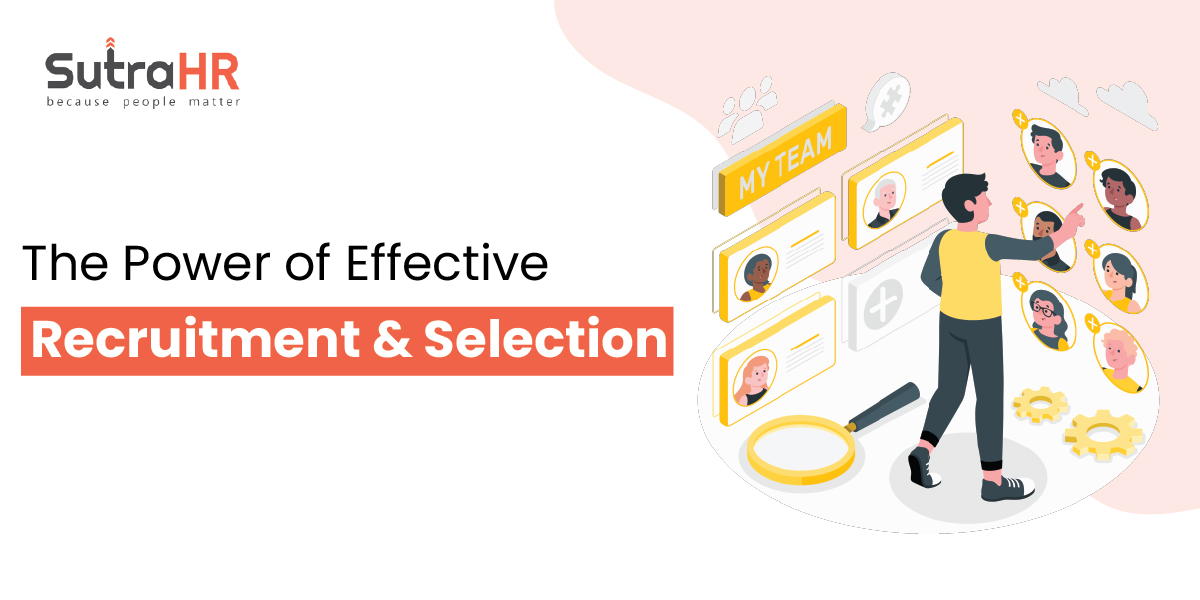Recruitment and selection are the two fundamental processes in hiring new employees. These processes are critical in selecting the right person for the right job. However, finding the right candidate for a position can be daunting; in many cases, it can be as challenging as threading a needle or getting car parking in Mumbai. In this blog, we will explore why recruitment and selection are important, the processes involved, and the difference between these processes.
What are the Difference between Recruitment and Selection:
Recruitment and selection are two separate processes, although they are commonly confused. However, these processes differ in their objectives, methods, and outcomes.
About Recruitment
In order to fully understand recruitment, it’s crucial to explore its definition. Recruitment is the act of finding and selecting potential candidates for a job or position in a company. This process typically involves various methods to reach a wide pool of qualified candidates, such as job postings, referrals, and recruitment Agency like SutraHR. It is a crucial aspect of HR management, as it directly impacts the success and growth of an organization. With a clear understanding of recruitment, companies can effectively attract and hire top talent to join their team.
Recruitment Process
Here are six primary stages in the recruitment process.
1. Job Analysis
Identify your Needs Before starting the recruitment process, identifying the specific skills, qualifications, and experience required for the job is essential. This can be done through a job analysis that involves defining the roles and responsibilities of the position.
Tips For Job Analysis
- Identify the tasks and responsibilities of the job.
- Determine the knowledge, skills, and abilities required for the job.
- Specify the qualifications and experience necessary for the job.
- Determine the physical and environmental demands of the job.
- Identify the job’s relationship to other positions in the organization.
2. Create a Job Description Format
Once the job analysis is complete, the next step is to create a job description format that outlines the qualifications, skills, and experience required for the job. The job description should also include information about the salary, benefits, and working conditions.
Tips For Creating Job Description
- StartupHR Toolkit provides templates and resources to assist you in creating job descriptions effectively.
- Customize the provided templates to suit your specific needs and ensure that the descriptions accurately represent the positions you are hiring for
3. Screen Resumes
After creating a job description, the organization can start accepting resumes from potential candidates. The resumes can be screened to identify candidates that meet the minimum requirements for the job.
Tips For Screening Resumes
- Look for relevant work experience that matches the job requirements.
- Check for educational qualifications and certifications that align with the job requirements.
- Check for any gaps in employment and inquire about them.
- Look for relevant skills, both hard and soft, that align with the job requirements.
- Look for relevant industry experience and knowledge.
4. Telephone Interview
The next step is to conduct a telephone interview with the candidates that pass the resume screening stage. This interview can help the recruiter determine whether the candidate has the qualifications and skills for the job.
Tips For Telephonic Interview
- Introduce yourself and explain the purpose of the interview.
- Begin with open-ended questions to encourage the candidate to talk freely.
- Listen carefully to the candidate’s responses and take notes.
- Assess the candidate’s communication skills, tone, and demeanor.
- It is essential to give the chance candidate to ask questions about the job or company.
5. Conduct Face-to-Face Interviews
Candidates who pass the telephone interview can be invited for a face-to-face interview. During the interview, the recruiter can ask questions to assess the candidate’s knowledge, skills, experience, and suitability for the job.
Tips to Conduct Face-to-Face Interviews:
- Create a welcoming atmosphere by greeting the candidate warmly.
- Assess the candidate’s communication skills and body language.
- Provide an opportunity for the candidate to ask questions.
- End the interview positively by thanking the candidate and explaining the next steps.
6. Evaluate Candidates
After a face-to-face interview, the recruiter can evaluate the candidates based on their qualifications, skills, experience, and suitability for the job.
Tips For Evaluating Candidates
- Assess the candidate’s qualifications and experience against the job requirements.
- Evaluate the candidate’s problem-solving and critical-thinking skills.
- Consider the candidate’s communication skills and ability to work in a team.
- Assess the candidate’s cultural fit within the organization.
- Consider the candidate’s potential for growth and development within the company.
Selection Process
The selection process involves seven main stages.
1. Resume Review
The initial stage in the selection process is to review the resumes of the candidates that applied for the job. The resumes can be screened to identify candidates that meet the minimum requirements for the job.
Tips For Resume Review
- Check for relevant work experience and skills that match the job requirements.
- Check for any relevant industry experience and knowledge.
- Look for relevant skills, both hard and soft, that align with the job requirements.
- Look for any experience in leadership or team management.
- Check for any hobbies or interests that may be relevant to the job or company culture.
2. Aptitude and Assignment Test
After the resume review stage, candidates can be asked to take an aptitude or assignment test. These tests can help the recruiter evaluate the candidate’s skills and knowledge.
Tips For Aptitude And Assignment Test
- Ensure the test is relevant to the job requirements.
- Clearly explain the instructions and expectations for the test.
- Set a reasonable time limit for completion of the test.
- Ensure the test measures relevant skills and abilities required for the job.
- Evaluate the test results in conjunction with other candidate evaluation methods.
3. Initial Interview
After the tests, the recruiter can conduct an initial interview with the candidate to assess their knowledge, skills, and experience.
Tips For Initial Interview
- Use icebreaker questions to help the candidate relax and build rapport.
- Start the interview with a brief overview of the company and the role to provide context.
- When interviewing candidates, ask questions that allow the candidate to showcase their personality and interests.
- Provide examples of scenarios the candidate may encounter in the role and ask how they would handle them.
- Evaluate the candidate’s potential cultural fit within the organization.
4. In-depth Interview
If the candidate passes the initial interview, they can be invited for an in-depth interview. This interview can be more detailed and can help the recruiter evaluate the candidate’s suitability for the job.
Tips For In-depth Interview
- Evaluate the candidate’s potential for leadership or management positions within the organization.
- You can ask the candidate to provide specific examples of how they have contributed to the success of previous teams or projects.
- Evaluate the candidate’s potential for long-term success within the organization.
- Ask questions that evaluate the candidate’s decision-making process and reasoning.
- Use hypothetical scenarios to gauge the candidate’s problem-solving abilities.
5. Personality Checks:
After the in-depth interview, the recruiter can conduct personality checks to assess the candidate’s traits and characteristics.
Tips For Personality Checks
- Use a personality assessment tool that is validated and reliable.
- Evaluate the candidate’s personality traits that align with the job requirements and organizational culture.
- Consider the candidate’s social skills, emotional intelligence, and ability to work in a team.
- Assess the candidate’s values and motivation, including career aspirations and goals.
- Evaluate the candidate’s potential for growth and development within the organization based on their personality traits.
6. Conduct Background Checks:
Before making a job offer, the recruiter can conduct background checks to verify the candidate’s education, work history, and criminal record.
Tips For Conducting Background Checks
- Verify the candidate’s employment history and work experience.
- Check for any criminal records, including misdemeanors and felonies.
- Confirm the candidate’s education and professional qualifications.
- Evaluate the candidate’s credit history and financial background.
- Check for any negative online presence, including social media profiles.
7. Make a Decision
After completing the selection process, the recruiter needs to decide and choose the candidate best suited for the job. The decision-making process should be based on the candidate’s qualifications, skills, experience, and suitability for the job. Making the right decision can ensure that the organization hires the right talent and avoids the costs of making a wrong hire.
Tips For Making Decisions Before Hiring a Candidate
- Compare the candidate’s qualifications, skills, and experience to the job requirements.
- Evaluate the candidate’s potential cultural fit within the organization.
- Consider the candidate’s performance in all stages of the recruitment process.
- Assess the candidate’s potential for growth and development within the organization.
- Consider feedback from other team members or stakeholders involved in the recruitment process.
8. Offer Letter
Once the recruiter has made a decision, they can make an offer to the selected candidate. The offer should include details about the job, such as the salary, benefits, start date, and other relevant information. Sending an offer letter can help the organization ensure the candidate accepts the job offer and starts working.
Tips For Creating an Offer Letter
- Clearly outline the job title, responsibilities, and expectations for the role.
- Include the terms of compensation, such as salary, benefits, and bonuses.
- Provide information on the start date and any other relevant details regarding the position.
- Include any conditions or contingencies that must be met before the offer is considered final.
- Ensure the offer letter complies with all legal requirements and regulations.
- Use StartupHR ToolKit For Easily Making Offer Letter
9. Onboarding
The final stage in the recruitment and selection process is onboarding. Onboarding is integrating the new employee into the organization and ensuring that they are productive and engaged. This can involve training, assigning mentors, and introducing the new employee to the organization’s culture and values.
Tips For Onboarding Candidate
- Create a structured onboarding plan that outlines the training and orientation process.
- Assign a mentor to guide the new hire and answer questions.
- Provide clear expectations and goals for the first 90 days on the job.
- Ensure the new hire has the necessary equipment, software, and access to company systems.
- Schedule regular check-ins to provide feedback, answer questions, and monitor progress.
Importance of Recruitment and Selection
#Right Talent
Hiring the right employees is critical for ensuring that the organization has the required skills, knowledge, and experience to achieve its goals and contribute to its success.
#Building a Strong Team
Building a strong team is like assembling the Avengers. A strong team of employees can work together to enhance productivity, efficiency, and competitiveness, positively impacting the organization’s performance.
#Reducing Turnover
Minimizing employee turnover is important for retaining valuable employees and ensuring business continuity.
#Enhancing Employee Engagement
Effective onboarding and engagement strategies can improve employee engagement and increase productivity, commitment, and job satisfaction.
#Business Goals and Objectives
Hiring the right talent can contribute to achieving the organization’s business goals and objectives.
#Positive Employer Brand
A positive employer brand can attract top talent, enhance the organization’s reputation, and make it a preferred employer in the industry.
Conclusion:
Recruitment and selection are critical processes that can help organizations hire talent, build a strong team, reduce turnover, enhance employee engagement, achieve business goals and objectives, and develop a positive employer brand. With the DRM model, organizations can pay once and hire more, which can help them save costs and streamline the recruitment process. However, organizations must prioritize recruitment and selection and invest in these processes to ensure long-term success.









